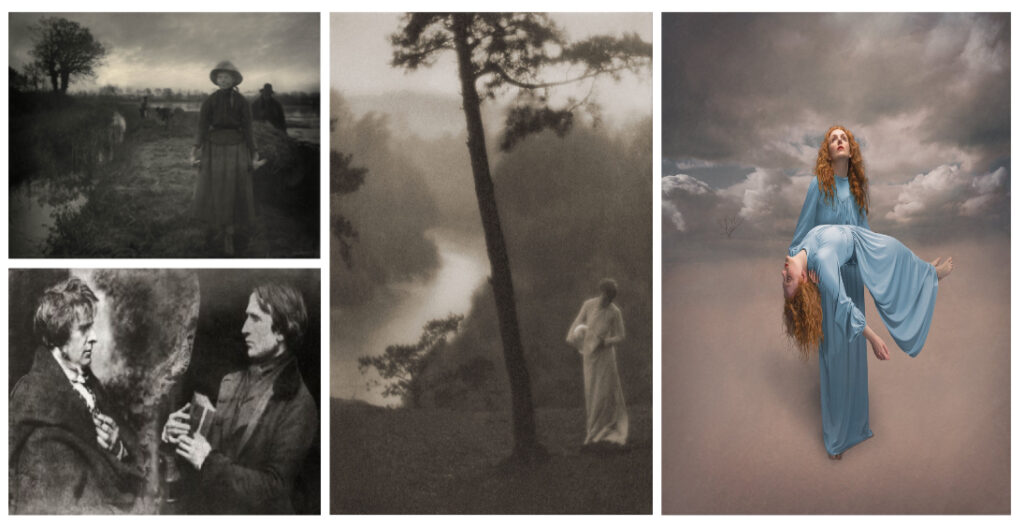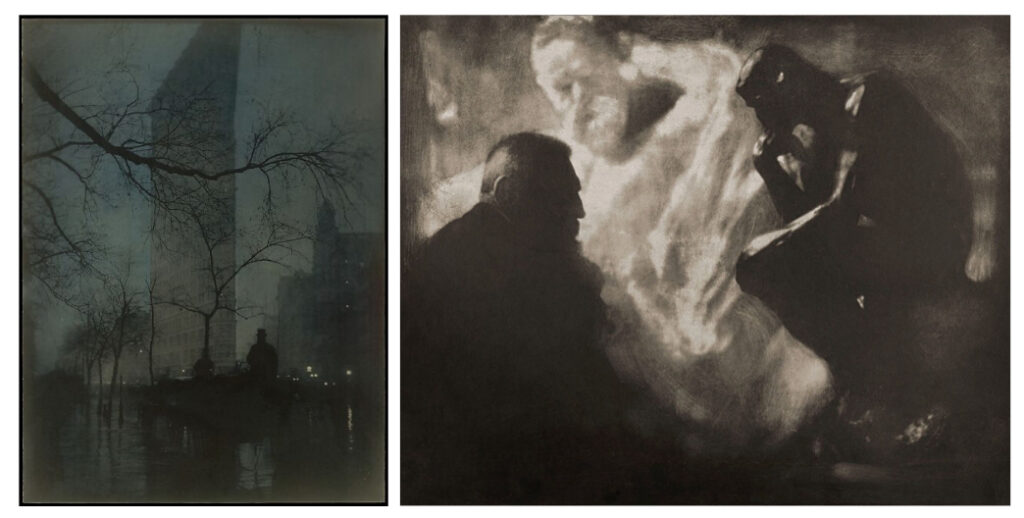
In 1830 photography was used mainly for producing scientific and representational images and was the preserve of a wealthy elite. The Pictorialist art movement emerged between the 1880s to the early 20th century. It began in response to claims that a photograph was nothing more than a simple record of reality. It transformed into an international movement of exhibiting photography societies to advance the status of photography as a true art form, and have the same status as paintings and sculpture. Key figures in the development of Pictorialism include Alfred Stieglitz, Edward Weston, and Gertrude Käsebier. Stieglitz played a major role in advancing Pictorialism as he organised exhibitions and promoted the idea that photography could stand alongside other fine arts like painting and sculpture.

Pictorialism focuses on creating expressive and artistic images, using techniques like: soft focus, manipulation of prints, and elaborate darkroom processes. Pictorialists aim to emphasise mood, atmosphere and emotion in images rather than sharp realism. Pictorialism influenced photography by encouraging photographers to experiment with their medium. Photographers would used techniques eg gum bichromate printing and bromoil printing in order to produce images that had the qualities of fine art. Pictorialism as an art movement highlights the importance of composition and the photographer’s creative control, challenging the idea that photography was just a mechanical recording tool. Modern day photographers aim to convey emotion, mood or personal interpretation of the world in their photographs by using: soft focus, selective manipulation of images, or digital techniques that imitate traditional Pictorialist processes. The key concept of pictorialism is emphasising the beauty of subject matter, tonality, and composition, rather than the documentation of reality.
José Ortiz
José Ortiz is a contemporary photographer. Ortiz’s work tends to explore themes of perception, memory and emotion. Ortiz’s photography can be associated with the Pictorialist movement which is a photography style that aims to elevate photography from mere documentation to a more subjective, artistic form of expression. José Ortiz’s photography evidently displays key themes of pictorialism (which focuses on conveying emotions and mood rather than documenting reality) as he combines digital manipulation with analog techniques to produce photographs with a dreamlike feel to them, evoking a sense of nostalgia, memory and emotional depth to his viewers. His work blurs the boundaries between reality and fantasy as he uses smooth lines in his images. This is a core concept in Pictorialism as it’s interested in subjective interpretation and creating images that speak to the inner emotions of the viewer. Ortiz’s use of light, shadow and texture, combined with soft focus and manipulation of colour, creates photographs that transcend mere representation of the physical world. Ortiz uses photography to evoke emotion rather than simply documenting reality. Additionally, his images are ambiguous which allow the viewer to think about, nterpret and connect to his images in a unique, personal level.
In the series ‘The Perfect Present’ where you can see a man walking by himself, is one example of Ortiz’s work that closely resembles that of old pictorial images. The photograph features a man in soft, muted tones and with blurred details. This lack of sharp focus and manipulation of light and shadows replicates the soft focus techniques used by Pictorialist photographers. As a result, his image that transcends the mundane and invites the viewer to think more deeply about what his image is trying to portray. In this image, you can also see the same man walking at different points in time. This is clearly not documenting reality as a singular photograph shouldn’t be able to capture the same person at different points in time. This therefore creates a surreal and dreamlike tone to the image due to the impossibility of this actually being possible to capture without manipulation, which is a key theme in Pictorialism. Overall, his use of soft focus, lighting manipulation and focus on mood rather than realism makes his images Pictorial in style. He shows how photography can be an evocative and emotional form of art and his image represents not just a moment captured in time but an emotional journey. This links to the art movement Pictorialism as it also aims to communicate feelings and personal experiences through photography rather than just documenting the physical.

How he links to the theme of union:
José Ortiz’s piece called ‘The Perfect Present’ links to the theme of union through its emotive and symbolic elements. For example, the title ‘The Perfect Present’ suggested to me the idea of a gift (an object or gesture shared between individuals), often given to celebrate a special occasion or expressing affection. The “perfect present” symbolises to me not just a physical gift but the act of giving. For example, the exchange of experiences, memories and qualities eg trust and companionship, that comes alongside friendship and union. The concept of a perfect gift goes beyond materialism; it represents a deep emotional connection between people. Ortiz’s photograph to me acts as a metaphor for the essence of friendship and union, showing how the simplest gestures are often the most significant. Additionally, his use of soft focus and muted tones in the photograph creates an intimate and personal mood, inviting the viewer to reflect on their own personal friendships. This quality links to the emotional depth that underlies strong friendships and unions. Just as the photograph’s soft textures evoke a sense of nostalgia and emotional warmth, friendships and unions are rooted in shared memories, gentle moments and emotional vulnerability.
The theme of union and friendship can also be linked to this photograph through the depiction of a man walking alone. To me, this symbolises the isolation and loneliness that one feels by being by themselves. As the man walks alone, the absence of friendship is highlighted in the image. This evokes feelings of melancholy and sadness in the viewer which also arises when one lacks meaningful connections with others. This solitude and sad tone contrasts with the warmth and support that friendship provides. The narrative suggests that the longing for connection, embodied by the man’s solitary walk, makes the value of friendship even more apparent, showing how essential these bonds are to one’s sense of belonging and happiness.
